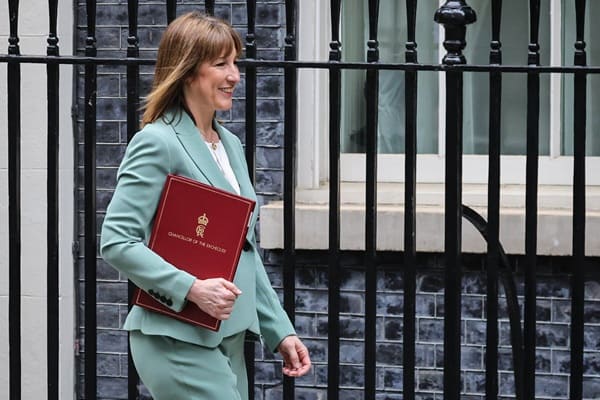The latest GDP data should ease fears that the UK economy is sliding back into recession.
But growth is still too weak to fix the public finances, or encourage hiring and investment, and there are already signs that the positive momentum is fading again.
First, the good news. GDP unexpectedly grew by 0.3% in the second quarter, helped by a big upward revision to the monthly data for April (now down 0.1%, not 0.3%) and a 0.4% jump in June.
Encouragingly, the economy appears to have stabilised after the shock of the increases in tax and other costs in April.
GDP per head rose too, by 0.2%, after a 0.6% gain in the first quarter. Headline growth still slowed markedly from the 0.7% in the first quarter. But this can largely be explained by the reversal of the earlier boost when companies brought activity forward to beat Trump’s tariffs. Changes in UK stamp duty played a part too.
The tariffs distortions also help to explain why growth in the euro area slowed even more sharply, from 0.6% to just 0.1%. The first estimates suggest that GDP actually fell in Germany and Italy (both by 0.1%) and in Ireland (by 1.0%).
The latest UK GDP data bring quarterly growth closer to the underlying trend of 0.2-0.3% suggested by the business surveys, or about 1% annually.
That is at least better than stagnation, but 1% would be little different from last year, when the economy grew by 1.1%. Indeed, growth in each of the first two quarters of 2025 was still slower than in the same two quarters of 2024.
The expenditure breakdown of the second quarter data was not great, either. Growth was led by government spending and “gross capital formation: other” (mainly “changes in inventories and acquisitions less disposal of valuables, as well as the expenditure alignment adjustment”). Otherwise, consumer spending and business investment were both weak.
Moreover, there are already signs that consumer and business confidence are stuttering again as inflation picks up further and as another punishing Budget looms in the Autumn.
The near-term prospects for the economy are still grim. As ever, more state intervention, more public spending, more borrowing, and even more taxation cannot lay the foundations for sustainable growth.

